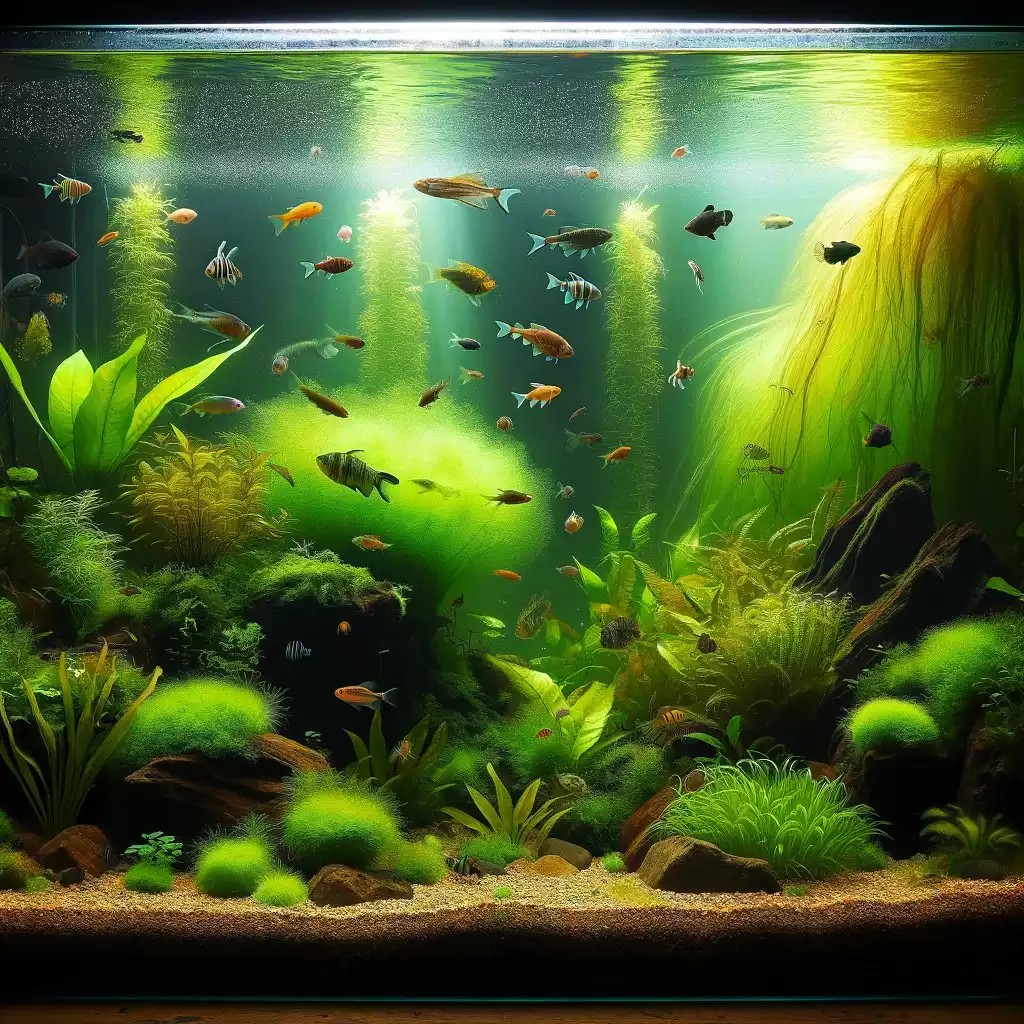Keeping fish at home not only brings a touch of tranquil natural scenery to a room but also allows those who love aquatic life to appreciate and study marine animals. However, the proliferation of algae in aquariums not only destroys the beautiful ecological environment but also has a significant impact on water quality, posing a serious threat to the health of fish and other aquatic animals. Algae are an indispensable part of the ecosystem, including our aquariums. However, these algae generally cling to walls and rocks, spoiling their aesthetics. This type of algae is known as stubborn algae.
Although these organisms vary in shape and color, once they grow on aquatic plants, they affect the plants’ photosynthesis and growth. If they grow on rocks, they destroy the aesthetic beauty of the plants. More critically, these plants can grow rapidly as soon as they touch water, making them almost impossible to prevent. Since they can’t be avoided, it’s best to act first. Today, we will tell you how this algae is formed and how it is eliminated.

Common Types of Stubborn Algae
Green algae: One of the most common types of algae in aquariums, usually green, they can grow quickly under sufficient light. There are many types of green algae, including spirulina and planktonic algae.
Brown algae: Usually found in newly set-up aquariums, they are brown or yellow-green, often covering the bottom of the tank or decorations. Brown algae can grow in the aquarium without strong light.
Black brush algae: Typically black or dark green, they grow on aquarium decorations, aquatic plants, and glass like brushes. Black brush algae are difficult to remove and require special treatment.
Hair algae: As the name suggests, hair algae resemble fine strands of hair and can form clumps of filamentous structures in the water. They typically attach to aquatic plants or tank decorations and sometimes float on the surface.
Blue-green algae: Strictly speaking, blue-green algae are bacteria, but they are similar to algae in appearance and growth habits. They usually form a slimy layer, covering the bottom of the tank or decorations, and can sometimes emit an unpleasant odor.
Why Do Aquariums Get Stubborn Algae?
If your aquarium is full of algae, congratulations, you have a complete ecosystem. As we all know, the first forms of life were seaweeds, and the presence of seaweeds in an aquarium means it has taken a big step towards becoming an ecosystem. In fact, seaweeds are a very important type of fish food, not only producing oxygen but also purifying water quality.
How do algae initially enter the aquarium?
This is a very natural process. Algal spores are everywhere; they are brought into the aquarium with new water or decorative items. Given the right conditions, such as sufficient light and nutrients, those tiny spores will grow into algae visible to the naked eye. Algae have a high reproductive capacity and can spread rapidly through asexual reproduction, even in seemingly clean water bodies.
How to Remove Stubborn Algae from Aquariums?
Since algae reproduce by releasing spores, regularly changing the water in the aquarium can reduce the number of spores, making it more difficult for stubborn algae to reproduce.
If it’s during the initial setup of the tank, algaecides can be used to prevent stubborn algae, but caution is advised since all medicines have side effects. When purchasing algaecides, choose reputable brands and avoid going for the cheapest option.
Algaecides work because stubborn algae are unicellular, and these stubborn types are lower forms of algae. The aquatic plants we keep in aquariums are more advanced and hence are not harmed. However, algaecides are toxic, even in small doses, and are not entirely benign. To completely eradicate stubborn algae, a strong filtration system is necessary, along with reducing the biological load in the aquarium, minimizing feed, otherwise, it could lead to excessive nutrient levels and rampant plant growth.
Of course, we can also cultivate algae-eating organisms. Here, black mollies and shrimps are highly recommended; they are really efficient algae eaters.
Finally, we can also control the lighting, reduce the lighting time, and avoid direct sunlight shining on the fish tank for a long time.
The prevention and control of algae growth in home fish tanks is a comprehensive management involving light, nutrition, water quality and other aspects, supplemented by appropriate artificial intervention measures. By scientifically setting the lighting duration, regularly changing water quality, controlling water nutrient input, and rationally matching aquatic plants, the prevention and control of algae in water bodies can be achieved. In addition, regular cleaning of aquariums and facilities to maintain water quality is also necessary maintenance work. Let us use scientific attitudes and methods to experience the joy of fish farming, maintain the cleanliness and ecological beauty of the aquarium, and create a harmonious symbiosis between man and nature.
 Instant
Quote
Instant
Quote Email
Us
Email
Us